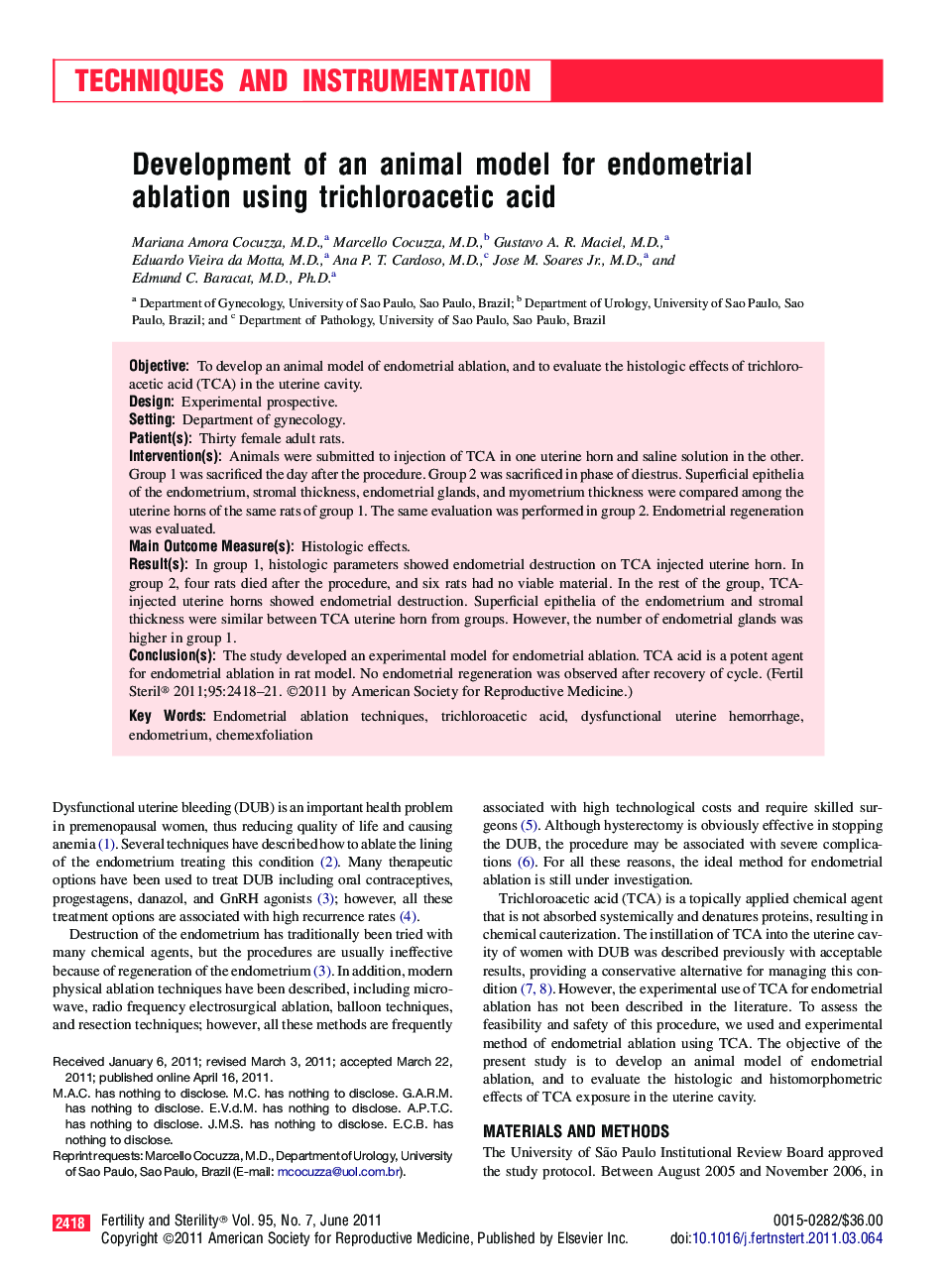| Article ID | Journal | Published Year | Pages | File Type |
|---|---|---|---|---|
| 3937793 | Fertility and Sterility | 2011 | 4 Pages |
ObjectiveTo develop an animal model of endometrial ablation, and to evaluate the histologic effects of trichloroacetic acid (TCA) in the uterine cavity.DesignExperimental prospective.SettingDepartment of gynecology.Patient(s)Thirty female adult rats.Intervention(s)Animals were submitted to injection of TCA in one uterine horn and saline solution in the other. Group 1 was sacrificed the day after the procedure. Group 2 was sacrificed in phase of diestrus. Superficial epithelia of the endometrium, stromal thickness, endometrial glands, and myometrium thickness were compared among the uterine horns of the same rats of group 1. The same evaluation was performed in group 2. Endometrial regeneration was evaluated.Main Outcome Measure(s)Histologic effects.Result(s)In group 1, histologic parameters showed endometrial destruction on TCA injected uterine horn. In group 2, four rats died after the procedure, and six rats had no viable material. In the rest of the group, TCA-injected uterine horns showed endometrial destruction. Superficial epithelia of the endometrium and stromal thickness were similar between TCA uterine horn from groups. However, the number of endometrial glands was higher in group 1.Conclusion(s)The study developed an experimental model for endometrial ablation. TCA acid is a potent agent for endometrial ablation in rat model. No endometrial regeneration was observed after recovery of cycle.
